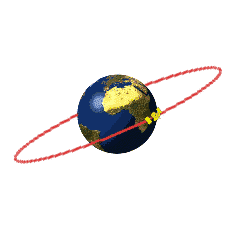Geostationary orbit

This orbit is ideal for certain kinds of communication satellites and meteorological satellites. The idea of a geosynchronous orbit for communications spacecraft was first popularized by science fiction author Sir Arthur C. Clarke in 1945, so it is sometimes called the Clarke orbit.
Read more about orbits at The Basics of Space Flight.


 Explore Worlds
Explore Worlds Find Life
Find Life Defend Earth
Defend Earth

